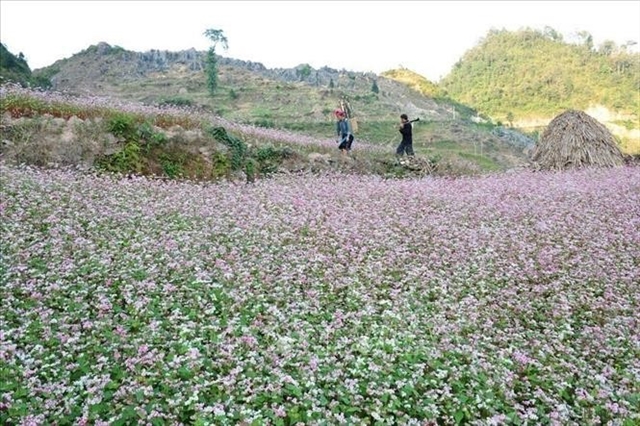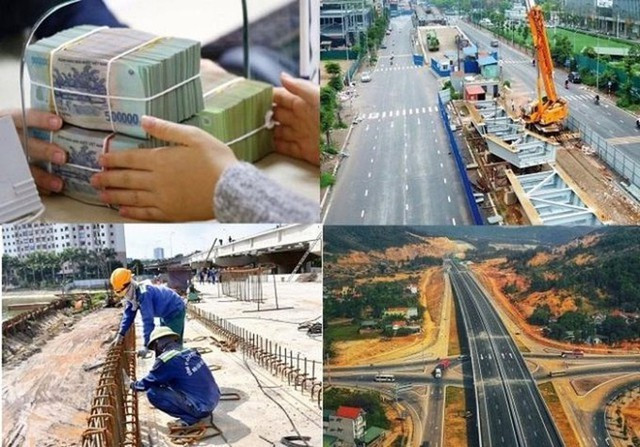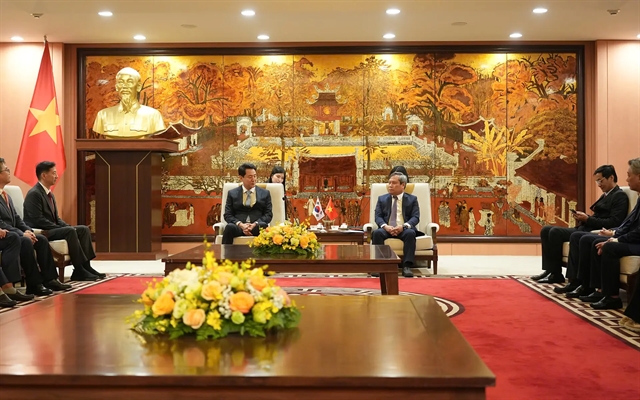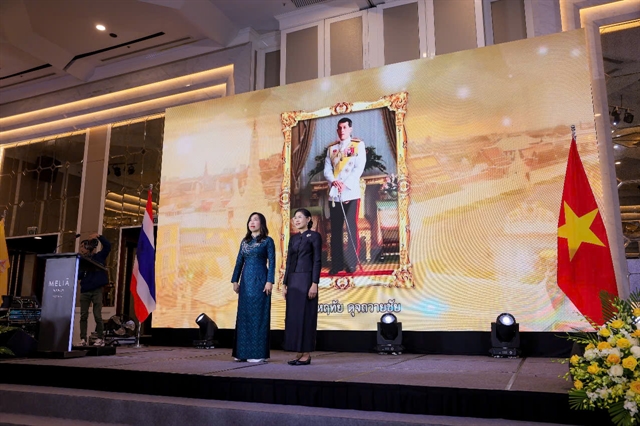 Opinion
Opinion
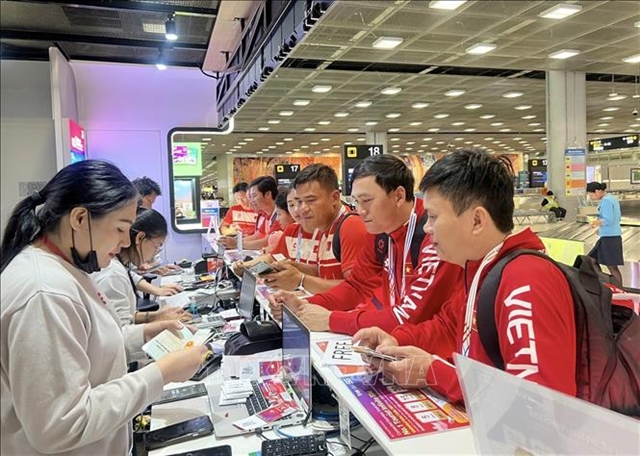
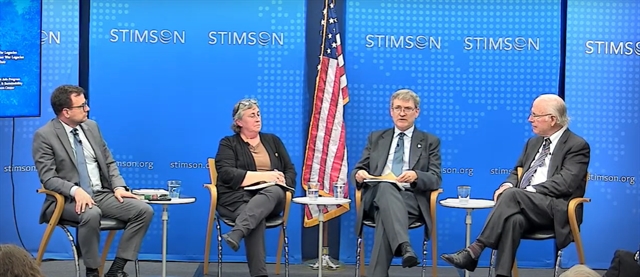 |
| (From second, left): Susan Hammond, Founder and Executive Director of the War Legacies Project; Andrew Wells-Dang, head of the Việt Nam War Legacies and Reconciliation Initiative at the US Institute of Peace; and Charles Bailey, former Ford Foundation Representative for Việt Nam. |
WASHINGTON DC — Half a century after the end of the war and three decades since the normalisation of diplomatic relations, Việt Nam and the United States have emerged as strategic partners in the Indo-Pacific. But the road to reconciliation—paved with pain, persistence, and personal conviction—has been anything but straightforward.
Much of today’s partnership rests on efforts to confront the legacies of the war: the toxic aftermath of Agent Orange, unexploded ordnance scattered across the countryside, and the deep wounds left by those still missing in action. These efforts were not driven solely by governments, but also by individuals who dedicated their lives to healing the past, allowing both countries to set aside past hostilities and begin to carve out the dimensions of an increasingly robust relationship.
Among them are Charles Bailey, who spearheaded breakthrough funding and dialogue on Agent Orange as the Ford Foundation’s representative in Việt Nam; Andrew Wells-Dang, who leads a US initiative to help locate and identify American missing-in-action (MIAs); and Susan Hammond, a war veteran’s daughter whose personal journey led her to support Agent Orange victims through people-to-people connections.
Their stories, shared at a recent event hosted by the Stimson Center to mark 50 years since the war’s end and 30 years of diplomatic ties, reveal how trust was built not through abstract policy, but through decades of sustained commitment to justice, scientific cooperation, and shared humanity.
Together, their efforts exemplify how reconciliation is made real—through listening, learning, and refusing to look away from the consequences of history.
Charles Bailey, former Ford Foundation Representative for Việt Nam:
It really began in the late 1980s, when discussions between the US and Việt Nam centred on Việt Nam assisting in the search for US MIAs—those missing in action. That was the starting point. A few years later, in the early 1990s, the US began cooperating with Việt Nam on unexploded ordnance (UXO): identifying locations, conducting clearance, and supporting victims.
However, it wasn’t until 11 years after diplomatic relations were established that Agent Orange was formally addressed. Agent Orange was a uniquely horrific weapon used during the Việt Nam War, and we can all be grateful that it has never been used since—and hopefully never will be again.
The story then progressed to cooperation on cleaning up dioxin at former military bases. The other "bookend" was in 2020, when the US agreed to provide technical assistance to Việt Nam to help locate and identify its own MIAs. So, we began with MIAs and, in a sense, ended with them.
Agent Orange devastated vast areas of South Việt Nam, killing trees and crops and destroying subtropical forests. It left behind degraded ecosystems and ruined livelihoods. At the time, it appeared harmless—just a light mist falling from the sky, released by planes flying at low altitudes. Few paid attention, and those who did were powerless to stop it.
What people didn’t know was that this mist contained a highly toxic chemical: dioxin. Harmful even in minute quantities, dioxin is invisible, odourless, tasteless, and undetectable by the laboratory methods of the time. It's proven to be one of the most toxic substances ever created. Its health effects are severe and far-reaching—not only for those directly exposed, but also for their descendants.
Dioxin has affected hundreds of thousands of US veterans, as well as a comparable number of Vietnamese soldiers, civilians, and their families.
My journey began 28 years ago when the Ford Foundation called and asked if I would go to Việt Nam to lead its new grant-making programme there. I said, “Of course.” It was the best decision of my life.
When we asked Vietnamese stakeholders what their priorities were, war legacies weren’t mentioned. Instead, they talked about rural development in the uplands, social science research, media, arts and culture, and international relations. So, I arrived with no intention of working on war legacies. I wanted to support Vietnamese organisations and individuals directly, without intermediaries, across the entire country—not just the big cities. Within three years, we had achieved that.
But about a year after I arrived, I travelled to the Central Highlands with agricultural scientists from a university near Hồ Chí Minh City. I’m an agricultural economist, so I was happy to join. What I saw shocked me. The hillsides were barren. Forests had vanished. Locals spoke of the spraying—30 years in the past, yet still fresh in their memory. This was in 1998; they were talking about 1968.
Back in Hà Nội, I quickly realised that the US and Việt Nam were deadlocked on this issue. The impasse was particularly entrenched on the US side. When it came to Agent Orange, there was first silence, then a conversation—but each side talked past the other. For one, it was all about science: "Don’t bother us with anything else." For the other, it was about justice. Beneath this were unproductive, even toxic, undercurrents that kept progress frozen.
For NGOs, European governments, and diplomats in Hà Nội, Agent Orange was untouchable—like the third rail in a subway: touch it and you're finished. That was the situation in 1998–1999.
Fortunately, the Ford Foundation was independent, had its own funding, and was decentralised. So, I was able to persuade the Foundation’s president to respond positively to a 2000 request from Việt Nam’s Deputy Prime Minister to donate to the Việt Nam Red Cross Agent Orange Victims Fund. Our donation of $150,000 turned out to be the largest contribution that fund had received at the time. When I reviewed the donor list, every other contribution had come from within Việt Nam—families, small businesses, people across the country.
That was my wake-up call. As I worked with the Red Cross, I realised the scale of the challenge. This was a massive problem—beyond the scope even of a major foundation like Ford.
Still, when governments are stuck, foundations can sometimes help move things forward. We tried to do just that by facilitating what’s known as “Track Two” diplomacy—using our grant-making to open dialogue.
Let me highlight two breakthroughs. First, we supported the Ministry of Health in Việt Nam and a Canadian environmental firm, Hatfield Consultants, to assess all former US military bases. They identified the “hotspots” where dioxin remained. This shifted the scientific conversation from “Is dioxin harmful?” to “Where is it now?” That change helped both governments. It allowed President George W. Bush, during his 2005 APEC visit to Hà Nội, to agree with the Vietnamese President that the US would assist with cleaning up former dioxin storage sites. Note: no mention of “Agent Orange,” or “danger.” Just a neutral statement—but it marked a major breakthrough.
The second breakthrough involved Senator Patrick Leahy and his adviser Tim Rieser, who used the hotspot discovery to secure the first US congressional appropriation for this issue.
We then helped establish the US–Việt Nam Dialogue Group on Agent Orange/Dioxin—an eminent persons group of five leading Americans and Vietnamese—to guide progress. They created a ten-year plan to assist victims, clean up contamination, and restore damaged forests.
These developments opened a unique window of opportunity, not only for the Ford Foundation but also for others like the Chino Cienega Foundation, which continues to support today’s War Legacies Working Group and this event.
Foundations, however, have limited resources. Between 2000 and 2011, we averaged $1.6 million per year in grants. From 2007 to 2024, the US government contributed around $35 million annually for dioxin cleanup and disability support—an amount that has increased in recent years.
This is, undeniably, a government-sized problem. No amount of private charity can match the scale required to clean up a site like Biên Hòa Airbase or to support the tens of thousands of severely disabled Vietnamese who have been helped by US government programmes.
It is a government-sized responsibility—and fulfilling it is not only the right thing to do, but also essential to reconciliation. And reconciliation must be built on truth, justice, and shared commitment.
Agent Orange remains on the minds of many Americans.
About a decade ago, a national survey was conducted to find out what people thought about Agent Orange in Việt Nam. Virtually everyone who responded recognised the term—especially when it was mentioned in connection with the word "Việt Nam."
Fast forward to today. We’ve just seen the 50th anniversary of the end of the war. Much of the press coverage in the US and internationally focused on Agent Orange in Việt Nam. What’s the situation now, 50 years on?
Major outlets—Time Magazine, CNN, The Washington Post, The Telegraph, Science—all published articles. The Associated Press ran a piece that was picked up nationwide. People are aware. They know what’s going on.
And politically, this has always been a bipartisan issue. There’s no reason to let that slip. That’s one of our strengths: this is about building relationships and continuing to strengthen them.
Andrew Wells-Dang, head of the Việt Nam War Legacies and Reconciliation Initiative at the US Institute of Peace:
I want to focus on another war‑legacy issue that affects both Vietnamese and American families, and one I’ve been working on at the US Institute of Peace: the Việt Nam Wartime Accounting Initiative. This is the US–led effort to help Việt Nam locate and identify its own missing.
The programme is run by the US Department of Defense, with contributions from USAID, the International Commission on Missing Persons, Harvard University and USIP. It emerged in 2021 with bipartisan congressional backing, notably through the leadership of Senator Patrick Leahy.
This is significant because it affects so many families. The number of Vietnamese missing—we don't have exact figures—is estimated at over 180,000, plus another 300,000 of unidentified remains in martyr cemeteries across the country. There are US MIAs still unaccounted for—over 1,500—and an unknown number of missing from the Republic of Việt Nam (South Vietnam) after the war.
And these are all related to each other, because remains are found at the same battlefield locations, and because information about one missing person can lead to information about others from other sides. When American veterans bring information over to Việt Nam and share that, they come back with potentially information about American missing—and vice versa.
And just as veterans of different sides shared common experiences of war that they can exchange when they meet afterwards, families of the missing are affected profoundly by this experience. And when they meet together and share their stories, that's a real potential for understanding and reconciliation. And that's true both between Vietnamese and Americans, and also among Vietnamese.
Of course, there's no way that we can ever identify and recover all of the missing, but even a small percentage is significant, and every case is significant for the families.
As part of the Wartime Accounting Initiative at USIP, we've brought together groups of US veterans who have information about mass graves from battlefields in South Việt Nam that they were present at, with Vietnamese researchers who work as volunteers to find this information and share it with the Vietnam Martyrs Families Support Association—an association led by a retired general that represents Vietnamese families.
Last summer, a US veterans and families delegation that we brought to Việt Nam led to identifying locations of more than 20 mass graves, identification of over 100 fallen soldiers—most of them from Lộc Ninh in what was known as the Iron Triangle—and potentially more than 2,000 others that can be recovered.
So that's the physical progress. I think we also measure the relationships that are built as a result—the dialogues that have occurred, both organised at USIP and sort of self-organised and at Stimson and many other places, bringing together retired Vietnamese military with retired US military, Vietnamese Americans, the Director of the Defense POW/MIA Accounting Agency, and others.
This is a way to reach groups who are not the immediate sort of core reconciliation constituencies, right? Who may have reservations or lingering suspicions and questions about this. When they meet each other and when they're part of these dialogues, a new kind of understanding can be developed.
The good news is this programme is still continuing. It wasn’t subject to stop-work orders or cuts—at least many of the parts of it weren’t.
The DoD funding has been reauthorised for five more years, to 2031. We're figuring out now whether it's possible to continue all of the parts of it, and how that will go. I think there are still questions about the USAID part of it and some of the recipients.
Now, these networks of veterans and researchers and Vietnamese counterparts can continue with less or no funding, but they won’t be as effective. And really, time is of the essence for this, because the physical condition of remains is degrading year on year. The memories and physical ability to travel for veterans from both countries is also declining. Their families have been waiting for answers for 50-plus years.
This is something that we can help, and that funding should be expanded for.
Like Agent Orange and UXO and other issues, this is a humanitarian question. It’s not political or partisan. It’s in the national interest of both of our countries, and it’s a really efficient use of public funds that has a direct impact and benefit on people’s lives—both in the US and Việt Nam.
Susan Hammond, Founder and Executive Director of the War Legacies Project:
I'm the daughter of a Việt Nam War veteran. My father served two tours in Việt Nam. So when I had an opportunity in 1991 to go to Việt Nam, I really wanted to get a sense of what had happened to the country during the war—and why we went to war with this country. I didn’t even have a memory of my father until I was about six years old, when he came back from his second tour.
So I went and found a very, very poor country in 1991. But what I also found was hope for the future. The young people were really striving to go forward, and it’s something that really grabbed me. I knew I wanted to find a way to go back to Việt Nam.
I began working with an organisation called the Fund for Reconciliation and Development, on people-to-people relations—working with other NGOs dealing with all types of issues in the country to help Việt Nam recover from the war. We were also doing education programmes and all kinds of development work.
After the normalisation of relations [in 1995], I had an opportunity to meet a general who had two children. His first daughter was born before he served in the South, and his second daughter was born after. The first daughter was going to Columbia University—I had known her in New York. The second daughter had severe physical and cognitive disabilities.
That really opened my eyes to the long-term damage of the war—not just on the land, but on the people—and what Agent Orange has done to people.
At the same time, my father began showing signs of Parkinson’s disease. So it was hitting me personally at home, too. This decision to use that chemical didn’t just have an impact 30 or 40 years ago; it’s still affecting people today.
I remember going to the Landmine Survivors Network, which had already been very engaged with helping people impacted by unexploded ordnance, but they would not touch the Agent Orange issue.
I began working with lots of organisations, particularly those from the anti-war movement, who still wanted to address the impacts of the war. And the Chino Cienega Foundation, thankfully, funded me to do a lot of this work as well.
And it was a lot—it wasn’t just government-to-government or big foundation-to-foundation. There was a lot of people-to-people push to get this issue addressed.
One of the big changes that also happened, I think, was when the Vietnamese, in 2004, decided to sue the chemical companies that made Agent Orange. And all of a sudden there was so much attention to this issue. Stories were being told about people who were directly impacted.
You couldn’t go anywhere in Việt Nam without seeing photos or hearing stories about people during that 2004–2006 period, during the lawsuit. It really became—alongside the cleanup efforts and the effort to define what contamination was in the soil—about the people. Stories of people directly impacted by Agent Orange were everywhere.
It also became very, very difficult for the US government to ignore, because they were seeing how much the Vietnamese were remembering, how much they cared, and how much they wanted something to be done. They wanted accountability.
The Vietnamese always describe those affected as the poorest, and as having the most difficult lives. The push to support these people came from across Vietnamese society—from citizens to government.
I remember I got a phone call from a woman in Minnesota. She had heard about the lawsuit and about some of the work we were doing to help people impacted by Agent Orange. Her husband was dying. He was a veteran—served in Minnesota—and he was dying of cancer from his exposure to Agent Orange.
This was before the US government had started funding any programmes there.
She said, “Me and my husband want some of the US government funding to get to the people of Việt Nam. We want to help those who have been impacted by Agent Orange, just like we have been.”
After her husband passed, her widow benefits—and all the donations from friends and family—were donated to my organisation. And we went and directly helped families: with livelihood support, medical care, whatever each family needed.
All the families we worked with really understood that this support was coming from an American family—one that had suffered from Agent Orange too. That connection meant everything. It’s what keeps me going today.
And it’s what keeps me fighting—especially as I see these cuts, particularly the cuts that I fear are coming, to the programmes that help people who are severely disabled. — VNS

